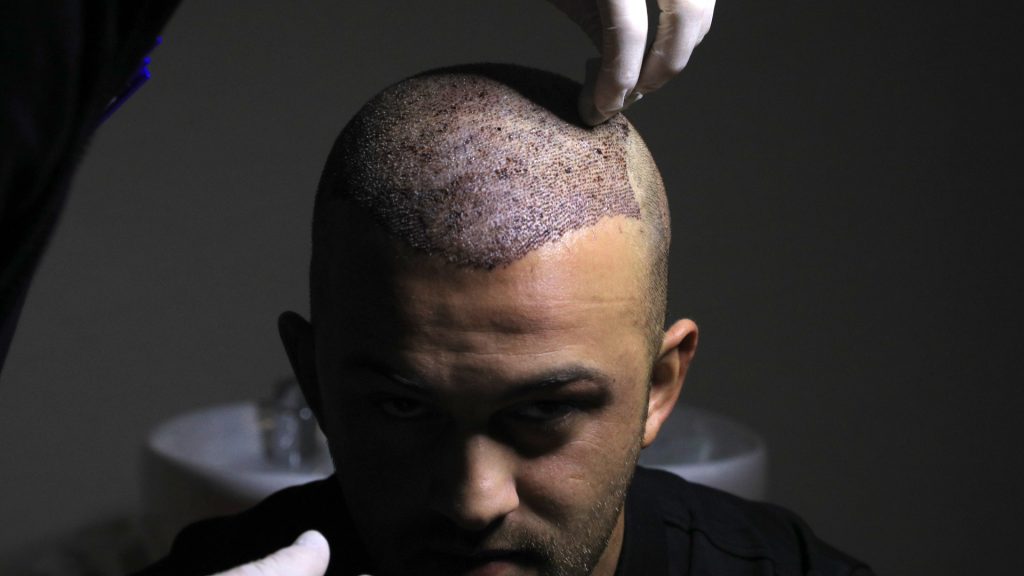Table Of Content

During the first few days, you may experience a bit of redness or swelling. To reduce any symptoms, it can help to sleep with your head elevated. You will want to take it easy as much as possible for the first couple of days after surgery. To help the healing process, you should avoid prolonged exposure to direct sunlight and high-impact exercise for at least one week after the procedure. You should also avoid spending too much time in direct sunlight for a few weeks before your surgery and wearing a head covering when outside to avoid burning your scalp.
What Are Alternative Hair Loss Treatments?

Environmental factors may also play a role in the efficacy of some hair transplants. To ensure the best results, patients are advised to choose healthy lifestyle choices. There are certain types of hair loss that may not benefit from the FUE procedure. Hair transplants are not recommended for individuals with alopecia. Alopecia is a specific type of hair loss condition that is caused by the immune system.
Find out if Hair Restoration is right for you.
How modern life is making men lose their hair earlier - and what to do - Daily Mail
How modern life is making men lose their hair earlier - and what to do.
Posted: Mon, 12 Feb 2024 08:00:00 GMT [source]
Hair is essentially lost due to the body flagging it as an intruder and attacking it. Alopecia may cause hair loss on the scalp as well as the rest of the body. Hair will not grow in these areas regardless of a hair transplant. Before hair grows to its maximum capacity, individuals are not advised to use additional hair growth products.
Follicular unit extraction (FUE)
Other postoperative surgical complications might include infection, wound dehiscence (edges of wounds cracking open and no longer meet), skin necrosis (tissue death). Most of the data is anecdotal at this point and will remain that way for some time. The best way to find out how much these treatment options cost is to talk to a hair transplant specialist with a free online consultation. Separating the follicular units refers to the process by which singular hairs within a follicular unit are separated.
Immediately after the extraction, the hair will be held in a petri dish filled with a HypoThermosol solution. This could last to a maximum of 3 hours depending on the transplant procedure you chose. Overnight hospital stays and aftercare medications may also add to the final cost. Your surgeon should plan the design of the transplant to make sure the hair looks natural as time passes. You may need 1 to 2 weeks off work after having a hair transplant.
Find a surgeon
This article discussed all the stages of hair loss and the number of grafts required for a hair transplant. Discuss your expectations of the surgery with your healthcare provider before you make any decisions. The procedure's most crucial step is knowing whether it's right for you.
Hard-Working Serums Designed to Make Your Skin Look Its Absolute Best
It is important to properly prepare for your hair transplant so that you have the best chance of getting the results you want. During your consultation, you’ll be asked about any medications you take, including hair restoration medications. Your physician may recommend that you stop taking blood thinners and supplements before the procedure. Since male pattern baldness (you guessed it) follows a pattern, this usually involves moving hair from the sides or back of the head to the front or top.
After the Procedure
Our hair restoration specialists are ready to answer all of your questions. You may need to schedule follow-up appointments for inspections of the donor and recipient sites. You should begin seeing results within a few months, with full growth being realized by 12 months.
Once hair follicles are extracted, they are placed using specialized instruments for precision. Hair transplants are an effective way to achieve long-lasting hair growth. The results are natural because the individual’s own hair is used. Modern transplants such as the FUE procedure also have fewer side effects. Both men and women with hair transplants can enjoy all the same activities without worrying if their hair will fall out.The full results of a hair transplant can take several months. This hair growth is fully natural and will follow the newly-created hairline that was specifically designed for the individual.
For most people, new growth will be noticeable approximately 3 months after a hair transplant procedure, but it can take up to 12 months to see full results. Most people who have hair transplants notice substantial hair growth in the areas where hair was transplanted within a few months. Sometimes more than one procedure needs to take place for more satisfying results. If you need more than one procedure, you'll likely have to wait a few months between sessions to allow your scalp to heal. Once the hair transplantation is fully done, it can take up to two years to see completely final results.
You may need several “touch-up” hair transplant surgeries to achieve a natural-looking result. During this procedure, a surgeon removes a small area of bald skin from the scalp. They loosen nearby skin containing hair and pull it over the bald area. A hair transplant, which moves hair from one place to another on your head, can be done in several ways. To be a good candidate, you'll need to have thicker areas of hair on your head.
Orlistat is used for weight loss in conjunction with exercise and a reduced-calorie diet, as well as after weight loss to help people keep from gaining back that weight. It isn’t exactly clear how metformin helps people lose weight, but researchers think the drug works as an appetite suppressant. Similarly to Ozempic, metformin may increase how much GLP-1 hormone your body makes. This can send a signal to your brain that you’re full, which means you eat fewer calories. Figuring out the right way to deal with hair loss is about finding a treatment that suits your unique needs.
That’s why, according to ISHRS research, only 33% of all hair transplant surgeries are done using the FUT method. For example, at UnitedCare, we ask you to start using Oral Finasteride 90 days before the operation and encourage Vitamin C supplements. Also, we don’t recommend the consumption of certain drugs and substances to ensure success such as cigarettes and nicotine, alcohol, Minoxidil, Aspirin, Ibuprofen, and a few others. The FUE method may also leave some scars in the area where the surgeon removed the follicles with the punch tool. There is also a risk of scarring on both the donor area and the area of the transplant.
Male-pattern baldness and hair loss in men are indexed using the Norwood (1–7) scale; hair loss and thinning hair in women are indexed using the Ludwig (types 1–3) classification system. Most patients will return to their normal work between 2 to 5 days after an operation. Notably, within the first 3 weeks of the surgery, the transplanted hair could fall out. At the beginning of the procedure, a medical specialist may wash the scalp before shaving a specific area. Once the surgery begins, the surgeon will start removing follicles from the donor site.













